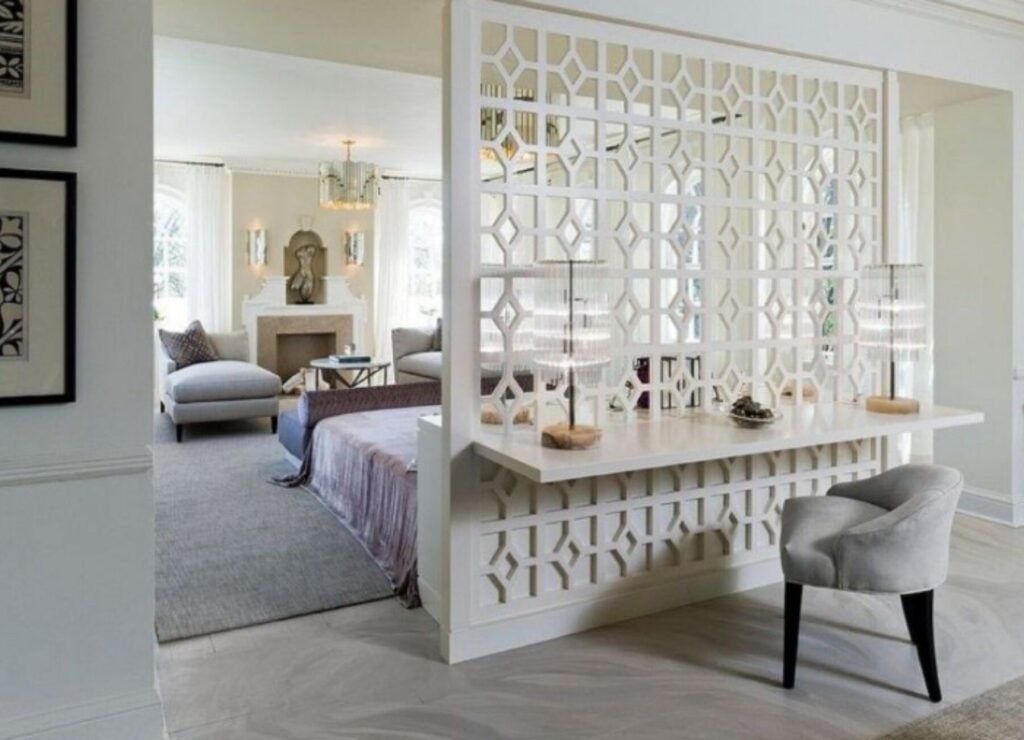These days, partitions are more than just a practical way to divide a room; they’re also a fashion statement. The correct materials for the dividers can elevate the interior to a new level of sophistication and functionality, regardless of whether you’re dealing with a smaller area or an open-plan arrangement. The addition of texture, warmth, and visual appeal, along with the creation of privacy and order, can be achieved through the use of these dividers. If you are confused about the type of partition wall, have the advise of a expert for recommended partition wall in Singapore. If you’re looking to upgrade your partition designs, consider these top materials.
Glass:
Among the many materials used to construct sleek, contemporary room dividers, glass ranks high. Its see-through quality lets in plenty of natural light, which is great for keeping things bright and airy. Modern homes and offices can benefit from the added privacy that frosted or tinted glass provides without sacrificing natural light. You may make glass partitions more eye-catching by adding patterns or colored frames. On the other hand, unless specially treated, glass does not normally provide soundproofing, so it is more appropriate for areas where noise control is not an important issue. Partitions walls are best installed by a professional like https://www.handymansingapore.net/false-ceiling-installation/ because they have all the knowledge about it.
Wood:
You may achieve a wide variety of looks with wooden barriers, from rustic to ultra-modern. The wide range of textures and tones offered by woods like oak, pine, and walnut make them ideal for use in a wide variety of interior design projects. Because they let in some light and air while still creating a sense of privacy, slatted wooden designs are very common. Commercial and residential areas alike can benefit from the natural beauty and inviting atmosphere that wooden barriers provide. But wood, particularly in heavily used places, needs frequent care to keep it looking good.
Metal:
Metal partitions, especially those constructed of iron, steel, or aluminum, are commonly used for their sturdy construction and industrial look. These walls might have simple geometric patterns or be more ornate and decorative. Apartments, contemporary workplaces, and houses with an industrial theme all benefit from metal partitions. Not only are they long-lasting, but they also complement other materials like glass or wood to create a harmonious aesthetic. Although metal is a great way to make a statement, too much of it may make a room feel chilly; to avoid this, it’s important to pair metal with warmer lighting or softer materials.
Brick:
Brick dividers provide character, depth, and texture for homes that desire a more natural or rustic vibe. Industrial buildings and country houses both include exposed brick or brick-clad walls. Brick, with its rugged texture and natural color variations, makes a bold statement that can be balanced with wood or textiles. But, compared to other materials, brick is less versatile due to its weight and durability. In addition, it could make a room seem even smaller, so it’s probably not the best choice there.
Mirrored Panels:
If you’re working with a smaller room, mirrored walls might help you make it feel more open and bright. Incorporating mirrors into your home design scheme is a great way to maximize the use of light, both natural and artificial. You may add a touch of elegance and sophistication to your home with mirrored panels, whether you utilize them completely or as decorations. Apartments, smaller living rooms, and other places where natural light is precious often feature these partitions. Their reflecting quality does require frequent cleaning, and they are easily smudged, so they might not be the best choice for very populated places.


